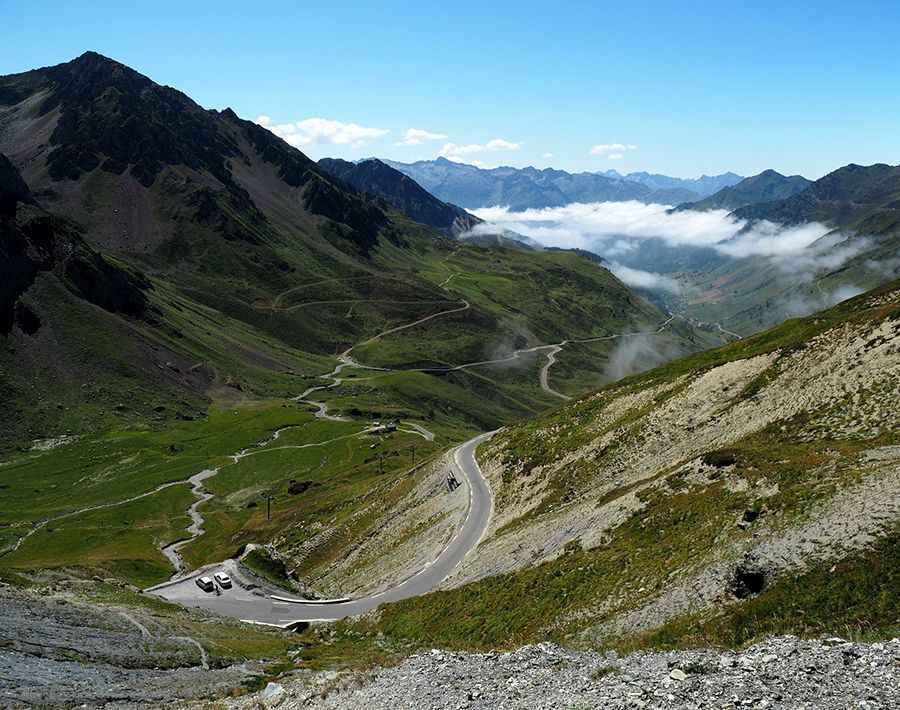The legendary Col du Tourmalet is one of the world's top roads
Col du Tourmalet is a high mountain pass at an elevation of 2,115m (6,939ft) above sea level, located in the Hautes-Pyrénées department in France. It is one of the most famous climbs on the Tour de France race.

Where is Col du Tourmalet?
The pass is located in the Occitan region, in the south-western part of the country. It connects the Adour valley to the Gave de Pau valley. A gravel road north of the pass, beside the gift shop, leads to the spectacular Pic du Midi de Bigorre via the challenging Col de Sencours.
How long is the Col du Tourmalet?
Set high in the central Pyrenees, the road to the summit is totally paved. It’s called D918 road. The pass is 34.1km (21.18 miles) long, running west-east from Luz-Saint-Sauveur to D935 road, south of Campan.
How hard is the Col du Tourmalet?
The climb is very steep, hitting a 12% maximum gradient through some of the ramps. The iconic pass is one of the most famous mountain climbs on the Tour de France and has been crossed by the race over eighty times - making it by far the most used climb in the history of the race. The first time was in 1910. At that time, the road was nothing more than a farm track between two of the highest peaks in the Pyrenees, used only by farmers and goats, travelling between the Adour and Gave de Pau valleys. Together with the Col d'Aubisque and the Col du Galibier, it is one of the "big three" in the French race. The Vuelta a España has also included the Tourmalet from time to time.
Is the Col du Tourmalet worth it?
The climb to the summit is spectacular and very popular. Two statues are situated at the summit: a Jacques Goddet memorial (organizer of the race between 1936 to 1987) and a large statue of Octave Lapize (the first person to conquer the pass). Each kilometre is marked by the distance to the summit and the average gradient of the next kilometre, making the climb even more challenging. The road entices cyclists from around the world, and it does not disappoint.
Vous êtes des assassins! Oui, des assassins
In 1910, Tour boss Henri Desgrange faced persistent persuasion from his assistant, Alphonse Steinès, to introduce a groundbreaking change to the Tour de France by incorporating challenging mountain routes. The pinnacle of this climbing revolution occurred on July 27 in the Pyrenees, featuring grueling ascents of the Peyresourde, Aspin, Tourmalet, Aubisque, and Osquich. Skeptical journalists, doubting the riders' ability to conquer this superhuman feat, dubbed the 326 km stage "the circle of death." The press described the newly established routes in the Pyrenean wilderness as "perilous" and "peculiar," much to the satisfaction of race director Desgranges and his newspaper, Le Auto. Despite Octave Lapize's victory in the stage, he voiced his discontent by berating the Tour officials as "murderers" [Vous êtes des assassins! Oui, des assassins!] while walking his bike up the Tourmalet, blaming them for subjecting the riders to such an arduous race.
Not only cycling
Despite its challenging nature, the Col du Tourmalet offers stunning panoramic views of the surrounding Pyrenees mountains, making it a popular destination for cyclists and tourists alike.
Image credit: Depositphotos